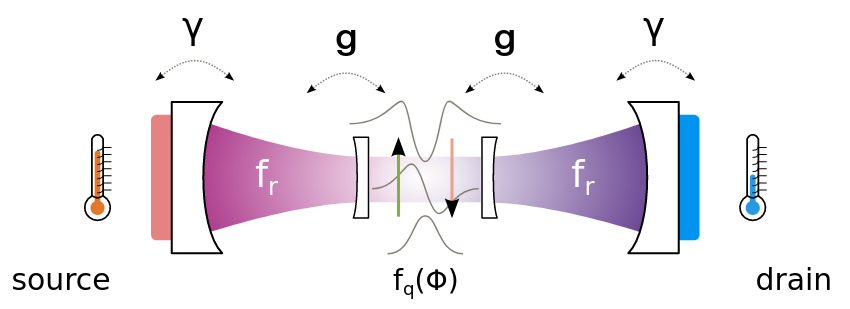on-chip manipulation of heat through a Transmon qubit

Tunable photonic heat transport in a quantum heat valve
Quantum thermodynamics is emerging both as a topic of fundamental research and as means to understand and potentially improve the performance of quantum devices. A prominent platform for achieving the necessary manipulation of quantum states is superconducting circuit quantum electrodynamics (QED). In this platform, thermalization of a quantum system can be achieved by interfacing the circuit QED subsystem with a thermal reservoir of appropriate Hilbert dimensionality. Here we study heat transport through an assembly consisting of a superconducting qubit capacitively coupled between two nominally identical coplanar waveguide resonators, each equipped with a heat reservoir in the form of a normal-metal mesoscopic resistor termination. We report the observation of tunable photonic heat transport through the resonator-qubit-resonator assembly, showing that the reservoir-to-reservoir heat flux depends on the interplay between the qubit-resonator and the resonator-reservoir couplings, yielding qualitatively dissimilar results in different coupling regimes. Our quantum heat valve is relevant for the realisation of quantum heat engines and refrigerators, that can be obtained, for example, by exploiting the time-domain dynamics and coherence of driven superconducting qubits. This effort would ultimately bridge the gap between the fields of quantum information and thermodynamics of mesoscopic systems.